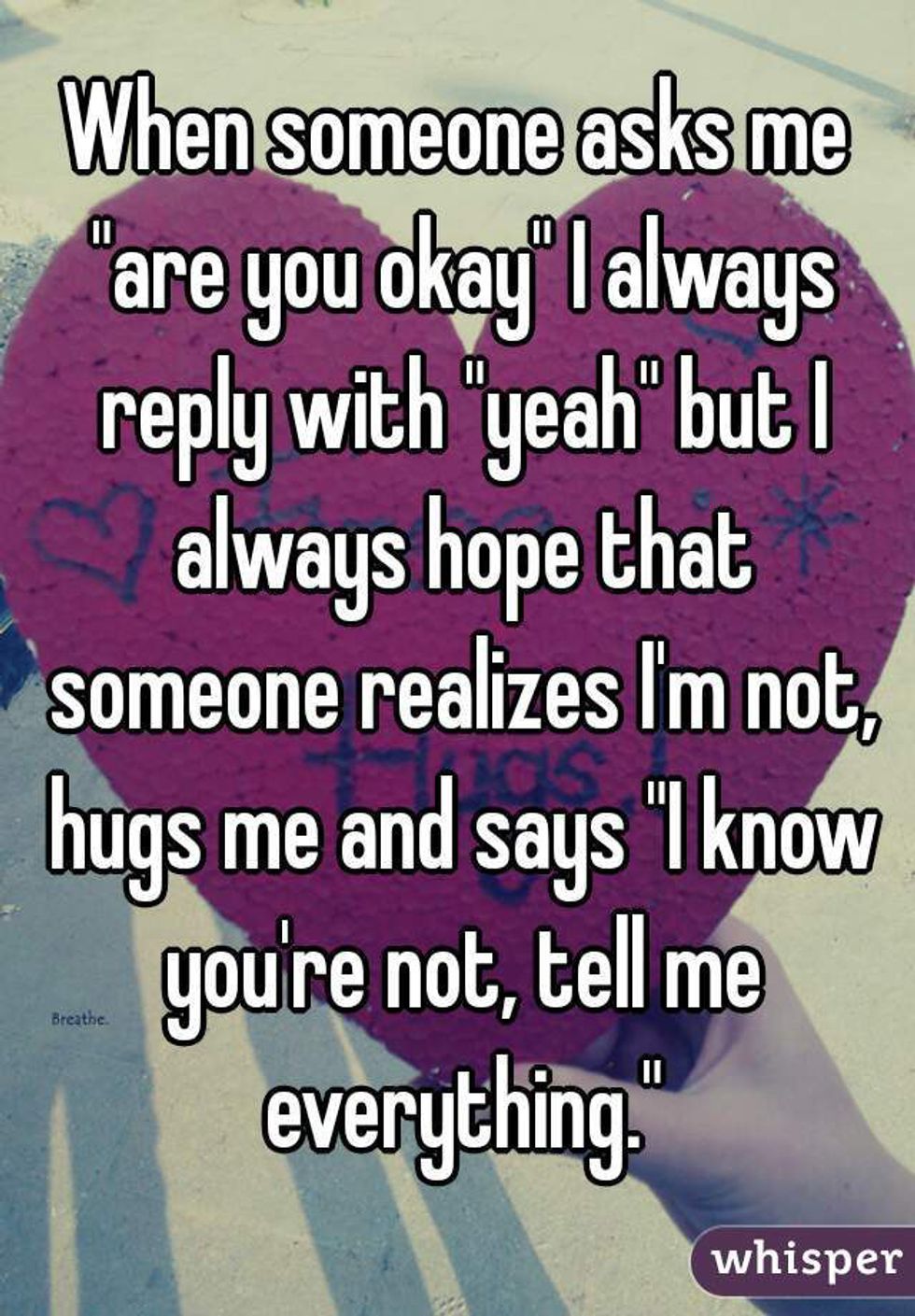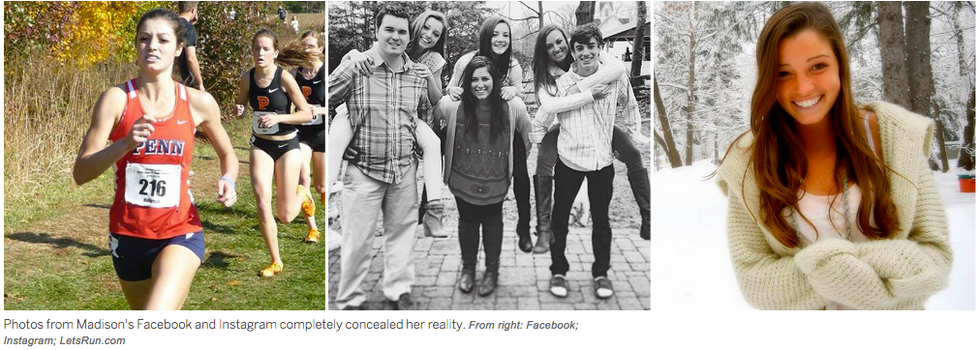Facebook. Instagram. Snapchat. Social media is commonplace; rarely will you find someone who does not use it to some extent. What is interesting about social media is that while we claim we use it to keep in touch with friends, what we post on social media is not always authentic. For example, if you are depressed, rather than updating your status to reflect that, you are more likely to just not post anything at all. Conversely, if you are feeling happy, you might post a selfie to express your happiness, or a picture illustrating who or what is making you happy. Your friends and family will see your picture, like and comment, then keep scrolling through their newsfeeds, and until you post another update, they might think you are doing well.
Rarely if ever do we see a sad status update. Why? We do not want our friends and family to see us that way. We do not want them to worry or fear for us. Additionally, we do not want to feel like we are just desperate for attention; a sad status update inherently does that. The result: an inaccurate reflection of your mental and emotional health, portrayed to everyone from your closest family members to distant acquaintances. This is the problem with social media: It is not genuine. It is not a good way to keep in touch with someone. Somewhat shockingly, social media is more likely to keep people apart than to bring them together.
In January of 2014, a student at the University of Pennsylvania took her own life. Her name was Madison Holleran. She was a track star, in addition to being smart, beautiful and talented. Her suicide was a mystery to everyone who knew her, from her own parents and siblings to her friends and classmates. Looking at her social media accounts would not tell the story behind the pictures and the status updates. She was depressed. Still, she posted pictures of herself doing what she loved—running—and pictures of herself with her family and friends, smiling. Nobody knew what was truly happening to her, and nobody knew what was about to take place.
ESPN’s Kate Fagan wrote an article about Madison, titled “Split Image,” in which she outlines the dangers a misleading social media persona can cause as she tells the tragic story of Madison Holleran’s death. She writes:
“Her mom remembers looking at a photo on her feed and saying, ‘Madison, you look like you're so happy at this party.’
‘Mom,’ Madison said. ‘It's just a picture.’
Everyone presents an edited version of life on social media. People share moments that reflect an ideal life, an ideal self.”
She continues by explaining how Madison’s pictures almost completely contradict the way that Madison must have been feeling. Her final picture, one of holiday lights in Rittenhouse Square, a park in Philadelphia, showcases a beauty that seems unearthly.
In Fagan’s article, she tells of that bitter cold January morning, the events leading up to it, and the shocking aftermath that followed. She tells of the confusion of Lehigh soccer coach Eric Lambinus, who was the last to speak with her before she passed away. “’I've gone over that night probably 100 times in my mind,’ he says. ‘I wish I had spent a little more time with her, but really nothing seemed out of the ordinary,’” she writes. She tells of the worry Madison’s mom, Stacy, felt as she frantically realized her and Madison’s friends were unaware of Madison’s whereabouts. She tells of her close friend Ingrid’s panic as Ingrid contemplates the thought of Madison, dead. Fagan brings to light an issue that needs to be addressed: the subtle but ever-present divisiveness that social media causes.
More recently, a young woman named Olivia Kong, also a University of Pennsylvania student, committed suicide. Her Facebook profile picture is one of her smiling at the camera, one that is genuine, not forced. She, like Madison, was also successful: She was a member of a business fraternity and a service fraternity, and had studied abroad in Australia, according to the Daily Pennsylvanian. Those who spoke about her only spoke of positive things about her, including her one-of-a-kind demeanor and her ability to easily talk to people and make friends.
Suicide is tragic in so many ways, as it is a death that can be prevented. Perhaps social media might be partially to blame; rather than acting as a medium to showcase one’s true colors, it acts as a place to portray an ideal life. The stigma behind a sad status update needs to be eliminated. Whenever someone asks for help, whether it is through social media, or in person, we need to listen. Mental health needs to become an easier topic to discuss. A mental health problem that is not addressed can have worse effects than that of a physical health problem, even though one is invisible and the other is not. Perhaps suicides could be prevented if we all just communicated rather than pretending to be happy to present a positive image of ourselves for others to admire from afar. In a world that already has its fair share of terror, eliminating one form of it would be a huge step in making it a better place to live.

























